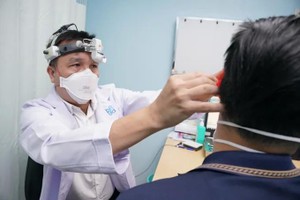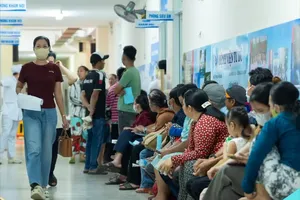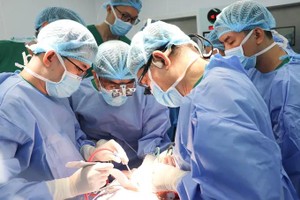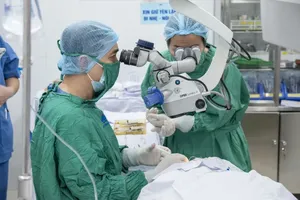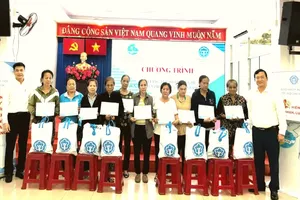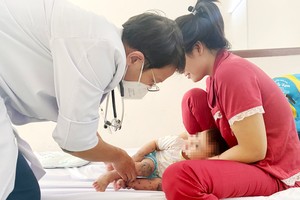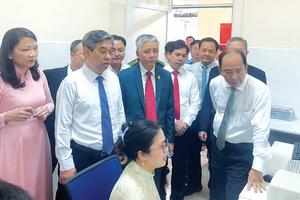
Thanks to good preventative mission, many Vietnamese mothers living with HIV have healthy babies. Worse, several of others refused treatment to prevent fatal transmission to their children. Accordingly, there have been many hiccups along the way Vietnam can achieve its goal by 2020.
The transmission of HIV from a HIV-positive mother to her child during pregnancy, labor, delivery or breastfeeding is called mother-to-child transmission.
Periodically, a mother from the Mekong delta province of An GIang takes her son to the Children Hospital No.1 in Ho Chi Minh City for treatment. Her son was infected with HIV because she transmitted to him yet she didn’t receive treatment while being pregnant.
The mother said she had to take the son to an infirmary in HCMC instead one in An Giang province because she worried her son would become a victims of discrimination by neighboring people and friends.
Since its establishment in 2005, the hospital’s department of Infection has admitted and provided treatment for thousands of HIV-infected kids in HCMC and southern provinces. Dr. Truong Huu Khanh, head of the Infection Department, said that most child in the department are transmitted the fatal disease from their moms.
Before, when the mother-to-child transmission prevention program has not been run, the figure of HIV-infected kids is sometimes up to 1,000. However, after the program was developed and the department was set up, the rate of kids dying of HIV has fallen gradually.
For instance, in the period 2005-2011, 85 kids died of the disease, accounting for 1.8 percent annually while it was 34 in the period 2012-2014 and from 2015, it was 16.
Head of the HIV-AIDS treatment and care department under the Ministry of Health Nguyen Thi Lan Huong said that in 2017, the country had over 2.7 million pregnant women. Of 1.4 million of them, 1,108 tested positive for HIV; the rate of pregnant HIV-infected women receiving early test after giving birth was 1.8 percent.
Nearly 2,000 mothers received ARV treatment; 99 percent of HIV-positive mothers have taken ARV drug.
Nonetheless, half of pregnant Vietnamese women have known that they are positive for HIV or not; subsequently, they have not taken medical treatment during pregnancy and after giving birth.
Consequently, around 200 new born babies are born with the disease annually nationwide. Their lives will be harder than their health friends, said Ms. Huong.
Many private medical clinics in HCMC neglected HIV testing for pregnant women, especially these in industrial parks and export processing zones where female workers live most.
Female workers work night and day and they opt for small clinics in the district instead of large hospitals. Therefore, a number of pregnant women have not taken treatment for HIV. Additionally, many of them have low awareness of preventive treatment during pregnancy.
Director of HIV/AIDS Prevention Center Dr. Tieu Thi Thu Van said that in a bid to reduce the number of HIV-infected kids due to mother-to-child transmission, in addition to encouraging private clinics to take tests, HIV/AIDS Prevention Committee in HCM also called for pregnant women to undergo HIV-test by releasing leaflets and posters.
All hospitals, consultation centers and infirmaries in districts provide free tests to pregnant women. The committee will liaise with HIV care and support system or social workers to persuade those who are taking ARV drug to have safe sex and birth control.
The HIV/AIDS Prevention Department stressed that early prevention in pregnant women is very important to protect young generation. Hence, it advised pregnant women living with HIV to go to medical clinic for consultation and treatment.
Ho Chi Minh City People’s Committee issued a plan to implement action month for prevention of mother-to-child transmission in June with the aim of calling for the participation of the entire machinery of state and all citizens in a bid to cut the rate of HIV- infected kids due to mother-to-child transmission below 2 percent by 2020.
In the month, related agencies will provide more services to prevent transmission from mothers to children.


